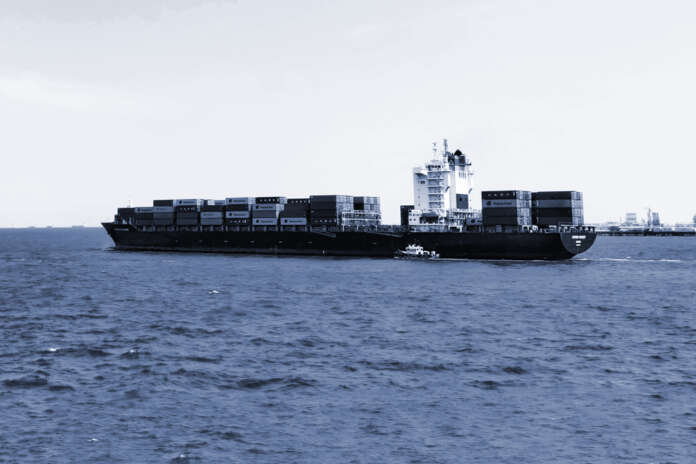
The liner shipping market continues to lose steam on the main head haul routes from the Far East. Rates for transatlantic business are keeping firm, though. By Michael Hollmann[ds_preview]
Spot freight rates for containers out of Asia continued their gentle slide in the last couple of weeks as vessel capacity has remained relatively relaxed. Although hard data is missing, anecdotal reports from freight professionals suggest that cargo volumes have not picked up as expected following the relaxation of lockdowns in China. Even the cancellation of around 10% of all sailings on the main east-west routes during July did not stop freight rates from declining further, although they still remain historically high – almost double the long-term average, according to Drewry’s World Container Index. Analysts are even predicting another set of record results by liner shipping companies for the second quarter. Yet, it looks more and more as if the market is past a turning point.
The largest falls keep occurring in the transpacific eastbound trade from China to North America, especially to the US West Coast. Downward adjustments by 3 % or more per week have been common lately. Reductions in the Asia-Europe trade are more limited right now following notable falls earlier during the first five months. The growing impression that trade volumes are slackening is in line with the disappointing performance of purchasing manager indices (PMI) beyond Europe and the US. Even the global PMI compiled by S&P Global showed another negative reading on the sub index for new export orders during June, signalling further weakness in cargo volumes.
Atlantic trades holding steady
The only trades holding steady amid the growing gloom are those within the Atlantic. Rates on the run from North Europe to the US East Coast keep moving sideways at levels much higher than a year ago. Benchmarking platform Xeneta is putting average levels at around 8,600 $/FEU despite a major increase of around 15 % in total service capacity in the transatlantic trade, according to Hong Kong research firm Linerlytica. Further, freight rates gained significant strength in trades from the Far East to the East Coast of South America and from North Europe to the West Coast of South America.
As far as cargo volumes in the transatlantic trade are concerned, latest available CTS data shows 3.5 % growth year-on-year for May, against a contraction by –2.8 % for global liftings. It indicates that US import demand for European goods has proven resilient until May. The more important factors for the strength in rates, however, appear to be rising congestion levels in ports in North Europe and on the US East Coast. Queues of waiting container vessels outside ports reached levels of more than 40 for Savannah in the US and 13–14 for Hamburg. The latter appears to be the most congested port in Northwest Europe right now. The reasons are manifold: most vessels arriving off schedule today; shortages of labour, trucks and chassis; strikes and labour unrest in the German ports. Problems have been accumulating and it seems that a quick fix is not on the cards. Although it is a nuisance for carriers, logistics operators and shippers, it cannot be denied that congestion in the North Atlantic area has turned into a major support factor for the freight market.
Smaller operators ahead
Meanwhile, over in the charter market, conditions remain more or less unchanged. Global carriers are still cautious committing to more tonnage given the global economic uncertainty leaving a bit more room for smaller competitors with a logistics or an intra-regional background. As a result, three out of four time charter fixtures were done by operators outside the top 10 during the last weeks, according to London broker Braemar. With tonnage supply still thin on the ground, especially larger ships, hire rates are only seeing small corrections. Looking at the Contex, shorter periods were marked down by no more than 1.3% over the past four weeks. ?



















